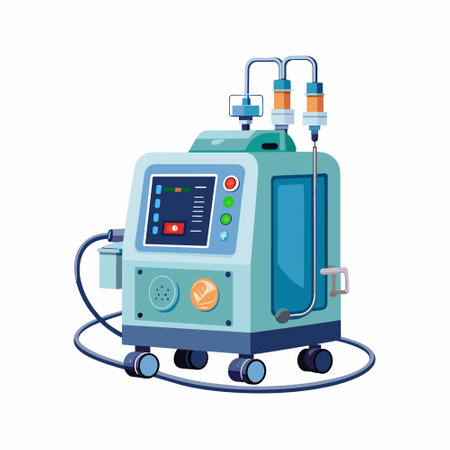Introduction to Cryolipolysis: Principles and Innovations
Cryolipolysis, commonly referred to as “fat freezing”, has rapidly gained traction within the UK’s aesthetic industry as a non-invasive solution for targeted fat reduction. At its core, the treatment harnesses controlled cooling technology to crystallise and eliminate stubborn fat cells without damaging surrounding tissues. This scientific principle, known as selective cryolysis, has been validated by extensive clinical research, making it an appealing alternative to more invasive procedures like liposuction.
Recent advancements in cryolipolysis devices have brought about enhanced precision and comfort for clients. Modern applicators are designed to fit various body contours, allowing practitioners to address common areas of concern such as the abdomen, thighs, and flanks with remarkable accuracy. Cooling cycles have become shorter yet more effective, minimising downtime and improving client satisfaction across clinics nationwide.
The surge in popularity of cryolipolysis throughout the UK can be attributed not only to its efficacy but also to the growing demand for treatments that align with busy lifestyles. British clients increasingly seek aesthetic solutions that deliver visible results without lengthy recovery periods or surgical risks. As regulatory standards tighten and technology continues to evolve, cryolipolysis stands out as a trendsetting choice—reshaping expectations of what non-surgical body contouring can achieve in today’s competitive market.
2. Initial Consultation: Personalised Assessment and Suitability
The initial consultation is a pivotal stage in the cryolipolysis treatment journey, designed to ensure safety, efficacy, and satisfaction for each individual. In the UK, reputable clinics prioritise a comprehensive approach, where professional consultation goes beyond simply discussing aesthetic goals. Here’s what you can expect during this crucial phase:
Assessing Patient Expectations
A thorough consultation starts with an open dialogue about your expectations. Practitioners will explore your desired outcomes and clarify what cryolipolysis can realistically achieve. This helps align treatment objectives with achievable results, minimising potential disappointment.
Reviewing Medical History
Your medical history plays a central role in determining whether you are a suitable candidate. Clinics will ask about any pre-existing conditions, medication use, allergies, or previous cosmetic procedures to identify any contraindications or risks. This transparent process ensures patient safety and tailored care.
Medical History Assessment Checklist
| Area of Assessment | Why It Matters |
|---|---|
| Chronic Illnesses (e.g., diabetes) | Some conditions may affect healing or increase risk |
| Skin Conditions (e.g., eczema, psoriasis) | Sensitive skin areas may not be suitable for treatment |
| Previous Cosmetic Procedures | Identifies possible complications or overlapping treatments |
| Medications & Allergies | Certain drugs or allergies may influence procedure safety |
Candidacy for Cryolipolysis Treatment
Not everyone is an ideal candidate for cryolipolysis. The practitioner will assess factors such as BMI, fat distribution, skin elasticity, and lifestyle habits. They will explain that this treatment is best suited for those seeking targeted fat reduction rather than significant weight loss.
Key Criteria for Suitability:
- BMI within a healthy range (typically below 30)
- Localised pockets of stubborn fat resistant to diet and exercise
- No contraindicated health conditions or pregnancy
- Realistic expectations regarding outcome and recovery timeline
This detailed, personalised assessment ensures that each patient receives honest advice tailored to their unique circumstances—upholding the highest standards of clinical governance in line with UK healthcare regulations.

3. Preparing for Your Session: Pre-Treatment Guidance
Embarking on your cryolipolysis journey in the UK involves more than just booking an appointment; proper preparation is key to achieving optimal results and ensuring your experience is as comfortable as possible. Here are culturally relevant recommendations tailored to the British lifestyle, taking into account local habits, climate, and healthcare practices.
Understanding Pre-Treatment Recommendations
In the weeks leading up to your session, it’s essential to adopt healthy habits. Maintaining a balanced diet rich in fresh produce—readily available from local markets or supermarkets—will support your body’s natural processes. Stay hydrated, especially with the UK’s variable weather, by drinking plenty of water or herbal teas instead of sugary drinks or excess caffeine.
Avoiding Certain Medications and Substances
Your practitioner may advise you to avoid anti-inflammatory medications such as ibuprofen, aspirin, or certain supplements like fish oil for a few days prior to treatment, as these can increase the risk of bruising. If you’re unsure, consult your GP or pharmacist, both integral parts of UK healthcare culture.
Managing Lifestyle Commitments
Plan your session around work, family commitments, and social events. Cryolipolysis is non-surgical and typically requires no downtime, but mild redness or swelling can occur. For those reliant on public transport or cycling—common in many UK cities—consider wearing loose-fitting clothing on the day to maximise comfort.
Preparing for the Weather
The British climate can be unpredictable. Dress appropriately for your journey to the clinic; opt for layers that can be easily removed during treatment. If you’re attending during colder months, ensure exposed areas remain warm post-procedure to prevent discomfort.
Communication with Your Practitioner
Don’t hesitate to discuss any specific concerns with your clinician prior to the procedure. Whether you have questions about allergies, past medical history (including common conditions like eczema or sensitive skin), or cultural preferences around modesty and privacy, UK clinics are accustomed to providing patient-centred care.
Final Checklist Before Your Appointment
- Avoid heavy meals or alcohol within 24 hours prior
- Arrive make-up free if treating facial areas
- Bring a book or device for entertainment during the session
By following these pre-treatment steps rooted in UK lifestyle considerations, you’ll set yourself up for a smooth and successful cryolipolysis experience.
4. The Cryolipolysis Procedure: What to Expect
Step-by-Step Guide to the Treatment Process
The cryolipolysis procedure is designed to be straightforward, comfortable, and efficient for clients seeking targeted fat reduction. Understanding each stage of the session helps demystify the process and sets realistic expectations.
Pre-Treatment Preparation
Before the procedure begins, a thorough assessment is conducted to confirm suitability. The treatment area is cleansed, and a protective gel pad is applied to safeguard your skin from direct contact with the cooling applicator.
During Your Session: Step-by-Step Breakdown
| Step | Description | Client Experience |
|---|---|---|
| 1. Applicator Placement | The practitioner positions the cryolipolysis device on the chosen area. | Mild tugging or suction sensation as the applicator adheres to the skin. |
| 2. Cooling Activation | The device gradually lowers the temperature to target fat cells beneath the skin. | Intense cold, slight tingling or numbness in initial minutes; this usually subsides as the area becomes numb. |
| 3. Monitoring Phase | The practitioner monitors both comfort and equipment for optimal safety and efficacy throughout the session (typically 35-60 minutes per area). | Clients often read, relax, or use electronic devices during this time. |
| 4. Applicator Removal & Massage | Once cooling concludes, the applicator is removed, and the treated area is gently massaged to break down crystallised fat cells and enhance results. | A brief period of firmness or redness is common; massage may feel unusual but is generally well tolerated. |
The Technology Behind Cryolipolysis
Cryolipolysis utilises controlled cooling technology to selectively target and freeze subcutaneous fat cells without damaging surrounding tissue. This non-invasive approach makes it a popular alternative to surgical fat reduction in UK clinics, offering precise contouring with minimal downtime. Devices used are typically CE-marked, ensuring compliance with British safety standards.
What Clients Can Anticipate During Their Session
Most clients report minimal discomfort during cryolipolysis treatments—mainly sensations of intense cold and mild pressure at first. The process is discreet enough that many people choose to catch up on emails or unwind with a podcast while undergoing their session. Aftercare advice will be provided immediately following your appointment, tailored to support optimal results and comfort in line with UK best practices.
5. Immediate Post-Treatment Experience
Undergoing a cryolipolysis session is a relatively straightforward process, but understanding what to expect immediately after treatment can help ease concerns and ensure a smoother recovery. Many patients in the UK report a variety of sensations as soon as the applicator is removed from the treated area. It’s common to experience numbness, tingling, or mild discomfort—these are all typical and generally resolve within a few hours to days.
Common Sensations After Cryolipolysis
The immediate area may feel intensely cold or even slightly tender due to the freezing process. Some individuals liken the sensation to minor pins and needles or a gentle ache, similar to what you might feel after holding an ice pack on your skin for too long. Redness and swelling are also standard reactions, often peaking within the first 24 hours before gradually subsiding.
Expected Side Effects
Aside from redness and tenderness, some patients notice temporary firmness, bruising, or itching at the treatment site. These side effects are generally mild and do not interfere with daily activities. The British approach tends to favour monitoring symptoms conservatively—most will opt for over-the-counter pain relief such as paracetamol if needed, but rarely find this necessary.
The British Approach to Comfort
In keeping with typical UK sensibilities, maintaining comfort post-procedure is all about practical self-care. Light activity, such as gentle walking, is encouraged, while strenuous exercise should be avoided until any discomfort settles. Britons often turn to a nice cuppa or relaxing at home with family as part of their recovery ritual. Wearing loose clothing around the treated area can help minimise irritation and maintain comfort as your body begins its natural fat elimination process. Most importantly, it’s advised to stay in touch with your clinic should anything unusual arise—British clinics pride themselves on approachable aftercare and clear communication throughout your treatment journey.
6. Aftercare and Results: Maximising Outcomes
After undergoing cryolipolysis, a well-structured aftercare routine is essential for achieving optimal results and ensuring your safety. For clients in the UK, it’s important to follow both general and locally relevant advice to support your recovery and enhance the effects of the treatment.
Comprehensive Aftercare Advice for UK Clients
Immediately after your session, you may experience mild redness, swelling, or tenderness in the treated area—these are typical and generally subside within a few hours to days. To maximise comfort and support the body’s natural healing process, avoid intense exercise, hot baths, or saunas for at least 24 hours post-treatment. Instead, opt for gentle walks and light activities. Staying hydrated is key; drinking plenty of water helps your lymphatic system flush out the crystallised fat cells more efficiently. In the UK climate, moisturising the skin regularly is also advisable to counteract any dryness or sensitivity caused by seasonal changes.
Timelines for Visible Results
Cryolipolysis is not an instant fix. Most UK clients begin to notice subtle changes as early as three weeks after treatment, with the most dramatic results typically visible between eight to twelve weeks. This timeline allows your body sufficient time to process and remove the targeted fat cells naturally. It’s important to maintain realistic expectations; while some may observe earlier improvements, full results depend on individual metabolism and adherence to aftercare guidance.
Addressing Common Concerns
It’s common for UK clients to have questions about returning to work or regular routines post-procedure. The good news is that cryolipolysis involves no downtime—you can resume most daily activities immediately. However, if you notice prolonged discomfort or unusual symptoms such as severe bruising or numbness beyond two weeks, consult your practitioner promptly. Another frequent concern is whether further sessions are necessary; your clinician will review progress during follow-up appointments and recommend additional treatments if needed based on your goals and body response.
By adhering to these aftercare recommendations and maintaining a balanced lifestyle, UK clients can significantly enhance their cryolipolysis outcomes. Consistent care ensures not only effective fat reduction but also a smoother overall treatment journey from consultation through to long-term results.
7. Long-Term Maintenance and Lifestyle Integration
Achieving optimal outcomes from cryolipolysis is not just about the procedure itself, but also hinges on how you sustain your results over time. In the UK, with its unique routines and cultural nuances, integrating healthy habits into everyday life is vital for long-term success.
Incorporating Healthy British Habits
To maximise the benefits of fat reduction, consider aligning your routine with typical British lifestyles. For example, opt for walking or cycling during your commute rather than driving or taking public transport when possible. Embrace the tradition of weekend rambles through parks or countryside, which not only supports physical activity but also provides mental wellbeing.
Smart Meal Choices
While enjoying classic British fare, balance is key. Choose grilled fish over battered, add extra vegetables to your Sunday roast, and swap high-fat puddings for fresh fruit-based desserts. Planning ahead for packed lunches with lean proteins and wholegrains can also help maintain your results without sacrificing convenience.
Mindful Socialising
Pubs and social gatherings are integral to British culture, so moderation is essential. Opt for lighter ales or a gin and slimline tonic instead of sugary cocktails, and share smaller plates or nibbles rather than ordering multiple mains. Building these mindful choices into your routine helps you stay on track without missing out on social experiences.
Ongoing Professional Support
Regular check-ins with your cryolipolysis practitioner can provide motivation and tailored advice. Many clinics in the UK offer aftercare programmes or follow-up appointments—take advantage of these services to monitor progress and address any concerns promptly.
Top Tips for Sustaining Results
- Stay hydrated by keeping a reusable water bottle at hand—especially important given the UKs unpredictable weather.
- Prioritise sleep, aiming for 7–8 hours per night to support recovery and metabolism.
- Maintain a consistent exercise schedule; even brisk daily walks contribute significantly.
- Keep portion sizes in check, particularly when dining out or attending events.
By weaving these practices into your daily life, you can ensure that the results of your cryolipolysis treatment are long-lasting and seamlessly integrated into a distinctly British way of living.

